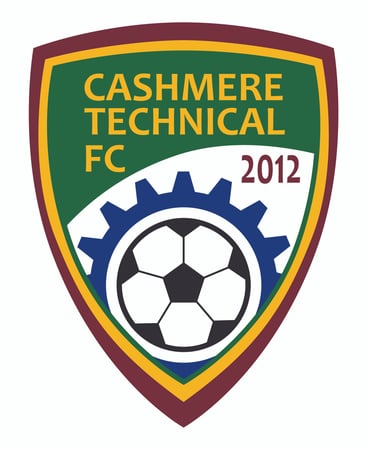Submission to Christchurch City Council
Draft Long-Term Plan 2024 – 2034
Submission on behalf of Cashmere Technical Football Club
Submitted via email: CCCPlan@ccc.govt.nz
Contact Details
Daniel Herd, Board Member, Cashmere Technical Football Club
Email: danielh@ctfc.co.nz
43 Hargood Street
Woolston 8062
Christchurch, New Zealand
Summary Points
- Cashmere Technical Football Club strongly supports the Programme – Community Parks Sports Field Development (ID 61785) and the $85.6m investment planned.
- We would like to see the investment brought forward to ensure that new fit-for-purpose football pitches are established quickly – and upcoming generations of players don’t miss the opportunities to play on these pitches.
- The proposed investment is a minimum required investment to bring Ōtautahi Christchurch in line with other similar and neighbouring communities in terms of the level of investment made in sports fields.
- Cashmere Technical Football Club would like to speak at the hearing.
Cashmere Technical Football Club would like to make a formal submission on the Draft Long-Term Plan 2024 -2034 (the LTP).
Our submission is specifically related to our strong support for the Programme – Community Parks Sports Field Development (ID 61875, with an $85.6m investment set out on page 188 of the LTP) and the need to prioritise this work to develop positive community, recreational and performance sport outcomes within our city.
Cashmere Technical Football Club is known to be the largest community sports club in the South Island, with more than 1,700 football playing members across all age ranges. We are faced with a significant shortage of training and playing facilities that are fit for purpose, as are most other clubs in the city. This adversely impacts the fitness and wellbeing of our community and the positive experience for thousands of footballers from age 4 through to Masters, social grades, community and school football, and the development of footballers within our region.
The establishment of a network of suitable training and playing facilities is vital to all the community and development outcomes set by Mainland Football and affiliated clubs. This network needs to include an appropriate number (circa 12) of community-owned artificial training and playing surfaces, with floodlight and changing room infrastructure, supported by a well maintained, grass field network. The establishment of this network would bring Ōtautahi Christchurch into line with other major cities in Aotearoa, and with our neighbouring councils Selwyn and Waimakariri.
This also supports the Recreation and Sports Activity Management Plan as part of the current Council LTP (2015 – 2025) which states that the Council is aiming to get “more people more active more often”. Providing more training and playing pitches of a suitable quality will allow greater opportunity for more people of all ages to participate in sport and recreational activities, such as participation in football which is one of New Zealand’s fastest growing sports.
Below we have limited our submission on the LTP to answering the questions in the submission form that specifically relate to the Sports Field Development Plan.
What matters most?
The establishment of a quality sports field network is of the utmost importance. It is a critical part of any highly liveable 21st century city. Ōtautahi Christchurch is at serious risk of falling even further behind its neighbouring councils, and its main city rivals for commercial and visitor investment, and growth.
New infrastructure investment in Selwyn and Waimakariri already make these regions attractive to live. Wellington undertook its field network review a decade ago and now has a well-established network of high quality, artificial turfs.
A collaborative confident city – improved sports fields will support more residents to actively participate in community sport, and provide more opportunity to connect with each other.
A green, liveable city – useable green space is critical to making Ōtautahi Christchurch a liveable city. Much of our green space is inaccessible during the winter months.
A cultural powerhouse city – Sport is a cultural unifier and football is a truly global sport, that connects communities. Just look at the recent FIFA Women’s World Cup successfully held in New Zealand (and Australia).
A thriving prosperous city – a high quality network of artificial pitches is a strong indicator of a thriving prosperous city and demonstrates innovation and willingness to make good investment in high-quality facilities. Football attracts people to live and work in a community, as it is a global sport.
Participation in healthy activities is the most important outcome for our community, and we fully support this being at the heart of the Sports Field Network Plan for Ōtautahi Christchurch. In saying that, we should not ignore the role of high-performance sport in contributing to community perception and wellbeing, and the passion for the city that we live in.
Quality grounds are critical to producing top quality athletes. Christchurch (and the South Island as a whole) is currently seriously under-represented in New Zealand National football teams throughout every age group, while Wellington, with its established turf network is over-represented.
Capital Programme
We strongly support the $85.6m set out in the LTP for the Programme – Community Parks Sports Field Development on the basis that this includes at least $50m committed to establishment of the Our Sports Field Network Plan for Ōtautahi Christchurch published in 2023. This plan includes the goal of establishing 12 floodlit artificial playing turfs (complete with changing rooms) around the city, supported by investment in improved grass playing fields.
We note that the $85.6m investment in the LTP is largely phased towards the backend of the 10-year period. This means that it is likely that our current generation of developing footballers are going to miss out on the use of these facilities through their formative years. We therefore urge the Christchurch City Council to reconsider this time frame, so the majority of these facilities are in place sooner than later.
Ideally, we would like to see the largest possible amount of new infrastructure being in place by 2026/27 at the latest.


